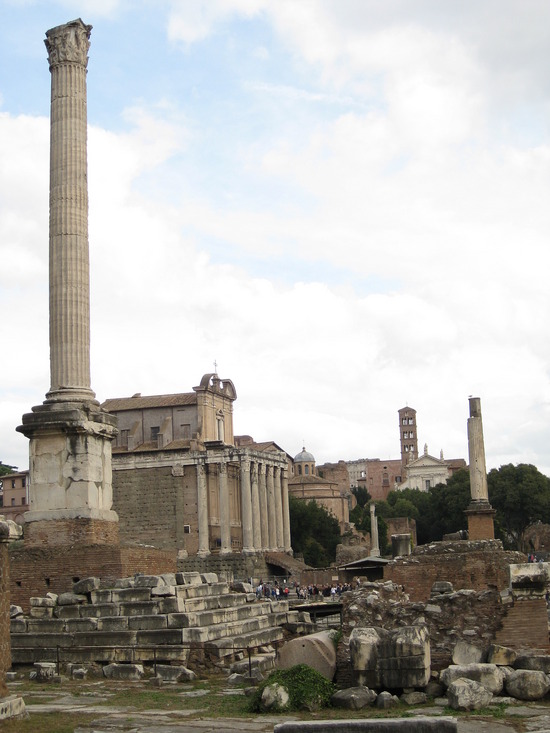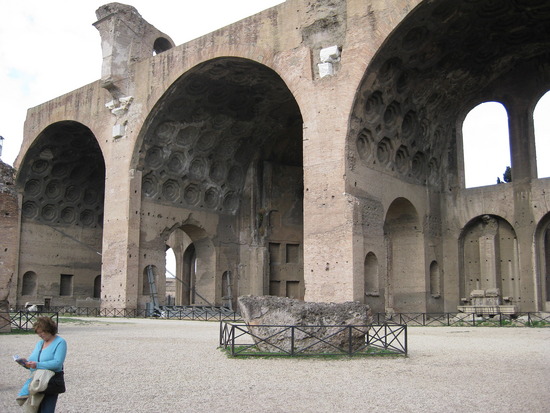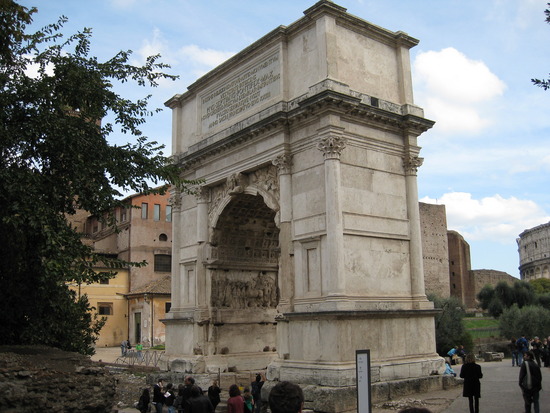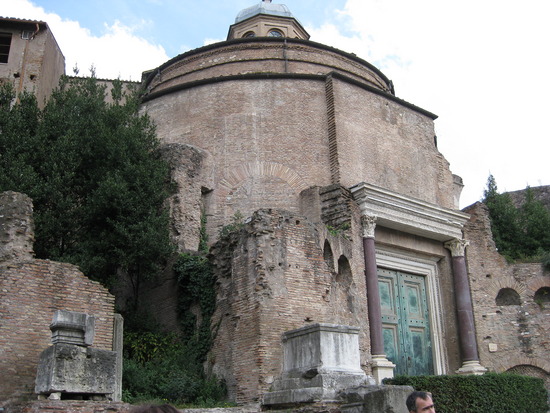Profile
Blog
Photos
Videos
Travel Blog of the Gaps
Before I left Rome, I spent most of a day toddling through the collectrivia of the Vatican Museum, and then I slipped next door for an hour-long perusal of St. Peter's Basilica.
Now, there is no doubt that the Pope's museum has one of the world's great assemblages of sculpture in the Western world. Unfortunately, its arrangement is more haphazard than well-planned, and sadly this erratic display hampers the opportunity to learn a bit more about the development of the art.
For example, one gallery includes a two-room grouping of animal sculptures that suggests the curators were simply aiming to create a stone zoo rather than pair each sculpture with its appropriate time period and school of art. Some folks, I suppose, may similarly find it aesthetically pleasing to arrange their libraries according to each book's size rather than its content, but this offers them little help when attempting to locate their copy of Catcher in the Rye or Call of the Wild when necessary.
The Candelabra Gallery in particular does nothing to hide its arbitrary nature. The original name for this long room, which contains a disarray of headstones and busts and cherubs and, of course, candelabras, was the Miscellaneous Gallery.
Other sections, though, offered impressive insights into history. The sparsely-visited Etruscan (pre-Roman) exhibit demonstrated that even before Romulus and Remus suckled on the she-wolf, the area around Rome had a thriving and complex culture. And the large Ancient Egypt exhibit offered a detailed and intriguing foretaste of my trip into the land of the Pharaohs.
But of course, the highlight and end of the line for most visitors to the museum is the Sistine Chapel. I had downloaded onto my iPod a guide for the frescoes, and it was a delight to follow along and notice the minute details of the decor while everyone else was simply milling about. I learned a lot, even though approximately every 2 minutes, the Vaticanistas would rebuke the crowd with "Silencio!" or "Shh!" They treated everyone with an equal level of scorn. (This ironically contrasts rather sharply with Michelangelo's macabre depiction of "The Last Judgment" on the wall behind the altar.)
In comparison to the Sistine Chapel, St. Peter's Basilica is undeniably more massive and even more ornate.
My time in St. Peter's gave me a chance to once again commune with Bernini, so to speak. He massively redecorated the Basilica in the 17th century, including designing St. Peter's Square, creating the canopy that covers the high altar, designing the dove window and the altar in the Holy Sacrament Chapel, as well as additional architectural changes. Bernini clearly set new secular and sacred standards for his time.
Vatican visitors can also commune with a pair of petrified past pontiffs. Both Pope Pius X and Pope John XXIII are buried behind glass where you can see the remains of their remains. So far, all the expected parts seem to still be attached.
Saint Peter's attempts to impress, and so naturally, it does. But the grandeur seems to be trying too hard in an era when opulent wealth just seems wasteful.
I've left out a few bits of my Roman holiday, but that closes out that section of the blog for now. If you have questions, feel free to email me or leave a comment. Hence forth, the Egyptian leg of the trip rules the writing. More on that in coming days.
Blog to you later!
Now, there is no doubt that the Pope's museum has one of the world's great assemblages of sculpture in the Western world. Unfortunately, its arrangement is more haphazard than well-planned, and sadly this erratic display hampers the opportunity to learn a bit more about the development of the art.
For example, one gallery includes a two-room grouping of animal sculptures that suggests the curators were simply aiming to create a stone zoo rather than pair each sculpture with its appropriate time period and school of art. Some folks, I suppose, may similarly find it aesthetically pleasing to arrange their libraries according to each book's size rather than its content, but this offers them little help when attempting to locate their copy of Catcher in the Rye or Call of the Wild when necessary.
The Candelabra Gallery in particular does nothing to hide its arbitrary nature. The original name for this long room, which contains a disarray of headstones and busts and cherubs and, of course, candelabras, was the Miscellaneous Gallery.
Other sections, though, offered impressive insights into history. The sparsely-visited Etruscan (pre-Roman) exhibit demonstrated that even before Romulus and Remus suckled on the she-wolf, the area around Rome had a thriving and complex culture. And the large Ancient Egypt exhibit offered a detailed and intriguing foretaste of my trip into the land of the Pharaohs.
But of course, the highlight and end of the line for most visitors to the museum is the Sistine Chapel. I had downloaded onto my iPod a guide for the frescoes, and it was a delight to follow along and notice the minute details of the decor while everyone else was simply milling about. I learned a lot, even though approximately every 2 minutes, the Vaticanistas would rebuke the crowd with "Silencio!" or "Shh!" They treated everyone with an equal level of scorn. (This ironically contrasts rather sharply with Michelangelo's macabre depiction of "The Last Judgment" on the wall behind the altar.)
In comparison to the Sistine Chapel, St. Peter's Basilica is undeniably more massive and even more ornate.
My time in St. Peter's gave me a chance to once again commune with Bernini, so to speak. He massively redecorated the Basilica in the 17th century, including designing St. Peter's Square, creating the canopy that covers the high altar, designing the dove window and the altar in the Holy Sacrament Chapel, as well as additional architectural changes. Bernini clearly set new secular and sacred standards for his time.
Vatican visitors can also commune with a pair of petrified past pontiffs. Both Pope Pius X and Pope John XXIII are buried behind glass where you can see the remains of their remains. So far, all the expected parts seem to still be attached.
Saint Peter's attempts to impress, and so naturally, it does. But the grandeur seems to be trying too hard in an era when opulent wealth just seems wasteful.
I've left out a few bits of my Roman holiday, but that closes out that section of the blog for now. If you have questions, feel free to email me or leave a comment. Hence forth, the Egyptian leg of the trip rules the writing. More on that in coming days.
Blog to you later!
- comments











zoehauser I love the illegal glimpse of the Sistine!
HenryB "a pair of petrified past pontiffs". Teehee :-)
Dee Tucker Remembering visiting St. Peter's Square and at the time, wanting to also visit the Sistine Chapel, but it closed at 5 pm. I wonder if that is still the closing time.My son Dale and two other sons enjoyed the beauty around us. Thanks for bringing this nostalgic time back.